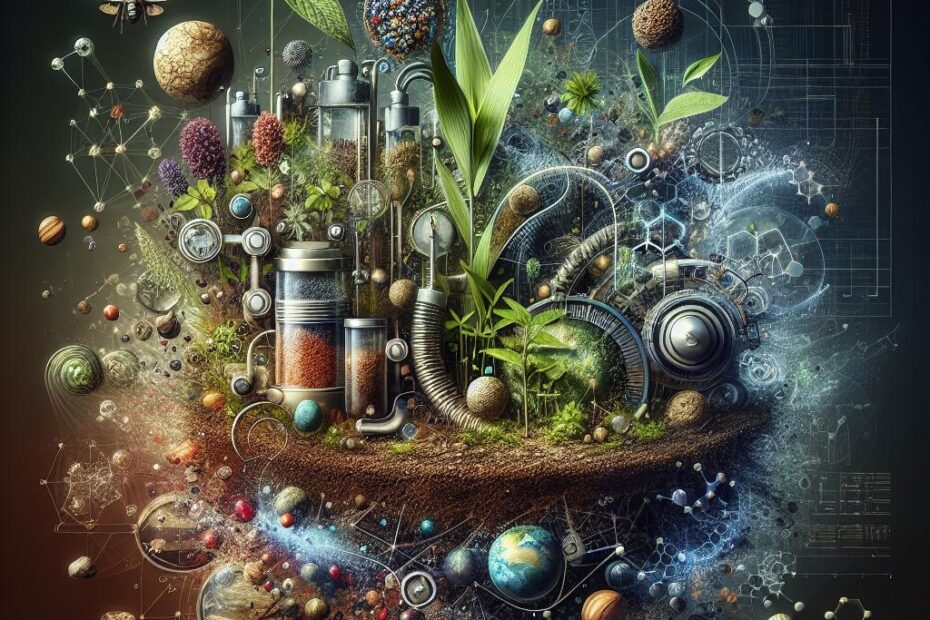Is Soil a Mixture or Compound? Understanding the Composition of Soil
When it comes to discussing soil, one common question that often arises is whether soil is a mixture or compound. To truly understand this concept, we must first delve into the composition of soil and the elements that make it up. In this article, we will explore the nature of soil, its components, and the distinction between mixtures and compounds. So, let’s dig in!
The Composition of Soil
Soil is a complex and dynamic natural resource that is vital for supporting life on Earth. It is made up of a combination of organic matter, minerals, water, and air. Each of these components plays a crucial role in determining the quality and fertility of the soil.
Organic Matter
Organic matter in soil consists of plant and animal residues in various stages of decomposition. This organic material provides nutrients for plants, improves soil structure, and enhances soil moisture retention. Some examples of organic matter found in soil include humus, dead plant roots, and microorganisms.
Minerals
Minerals are inorganic compounds that make up the solid component of soil. These minerals are derived from the weathering and breakdown of rocks and minerals over time. The most common minerals found in soil include:
- Sand: Large particles that provide drainage and aeration.
- Silt: Medium-sized particles that improve soil structure and water retention.
- Clay: Small particles that hold water and nutrients but can also cause soil compaction.
Water and Air
Water and air are essential components of soil that influence its physical and chemical properties. Water provides plants with hydration and helps transport nutrients throughout the soil, while air is necessary for root respiration and microbial activity.
Is Soil a Mixture or Compound?
Now that we have a better understanding of the components of soil, let’s answer the burning question: is soil a mixture or compound?
Mixture
In scientific terms, a mixture is a combination of two or more substances that are physically combined but not chemically bonded. Soil can be considered a mixture because it is comprised of various components such as organic matter, minerals, water, and air that are physically mixed together. These components retain their individual properties and can be separated through physical processes like filtration or sieving.
Compound
On the other hand, a compound is a substance formed by the chemical combination of two or more elements in fixed proportions. While soil contains minerals that are compounds (e.g., quartz, feldspar), the overall composition of soil is not considered a compound because the components exist in varying proportions and are not chemically bonded.
Benefits of Soil Mixtures
Understanding that soil is a mixture has important implications for agriculture, gardening, and environmental science. Some benefits of soil mixtures include:
- Improved Nutrient Availability: The diverse components of soil mixtures provide a rich source of nutrients for plants to thrive.
- Enhanced Soil Structure: Mixing different components helps create a well-aerated and well-drained soil environment for healthy root growth.
- Increased Water Retention: Soil mixtures with organic matter can hold water more effectively, reducing the risk of drought stress for plants.
Practical Tips for Soil Management
To optimize the fertility and health of your soil, consider the following practical tips:
- Add Organic Matter: Incorporate compost, manure, or cover crops to enrich the soil with essential nutrients.
- Monitor pH Levels: Test your soil regularly to ensure it falls within the optimal pH range for your plants.
- Rotate Crops: Rotate your crops seasonally to prevent nutrient depletion and reduce the risk of soil-borne diseases.
- Mulch: Mulching helps retain moisture, regulate soil temperature, and suppress weed growth.
Conclusion
In conclusion, soil can be best described as a mixture due to its diverse composition of organic matter, minerals, water, and air. Understanding soil as a mixture is crucial for proper soil management practices and ensuring the health and productivity of plants. By incorporating organic matter, monitoring pH levels, and practicing crop rotation, you can maintain fertile soil that supports thriving plant life. So, the next time you dig into your garden, remember that soil is not just dirt—it’s a complex and dynamic mixture that sustains life on Earth.
